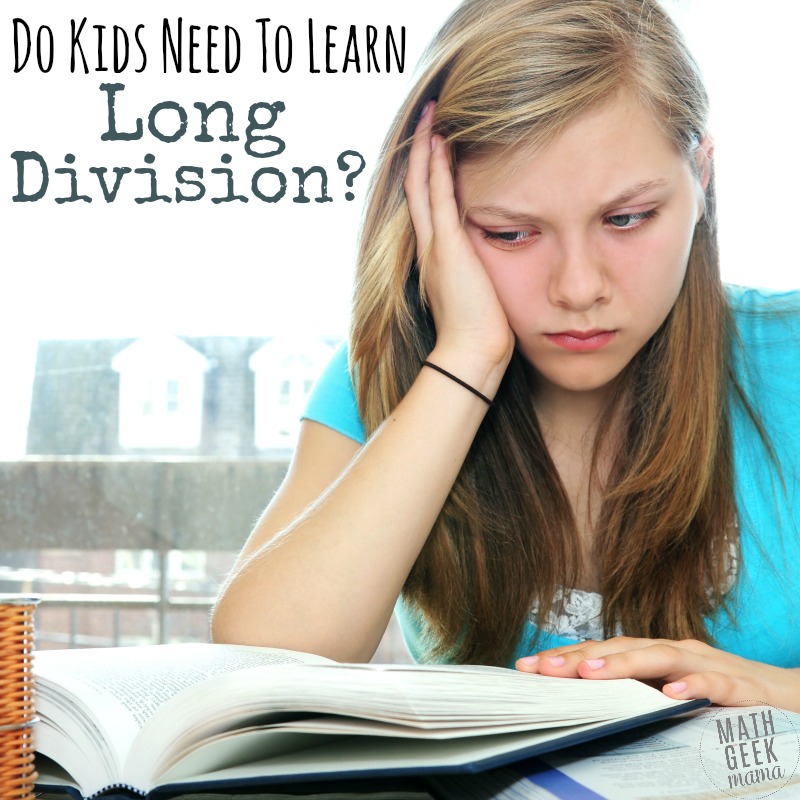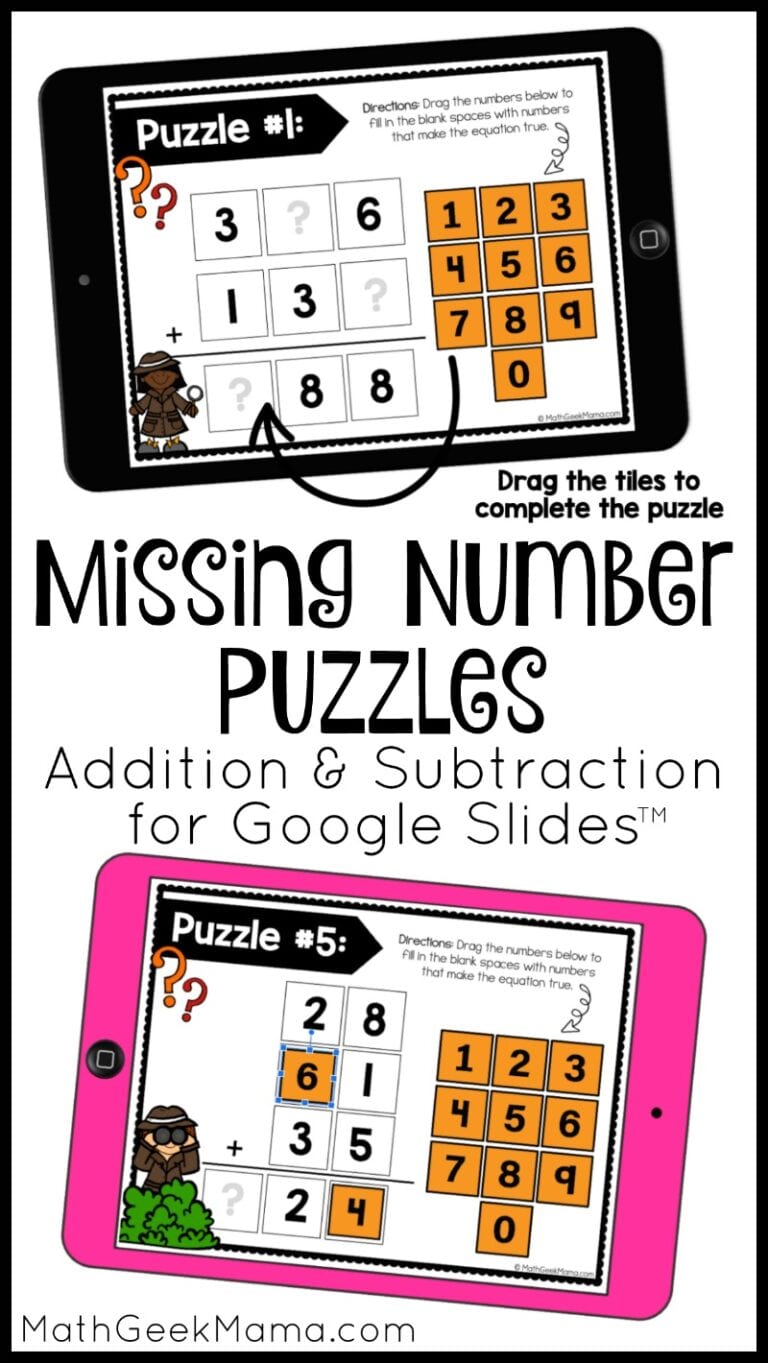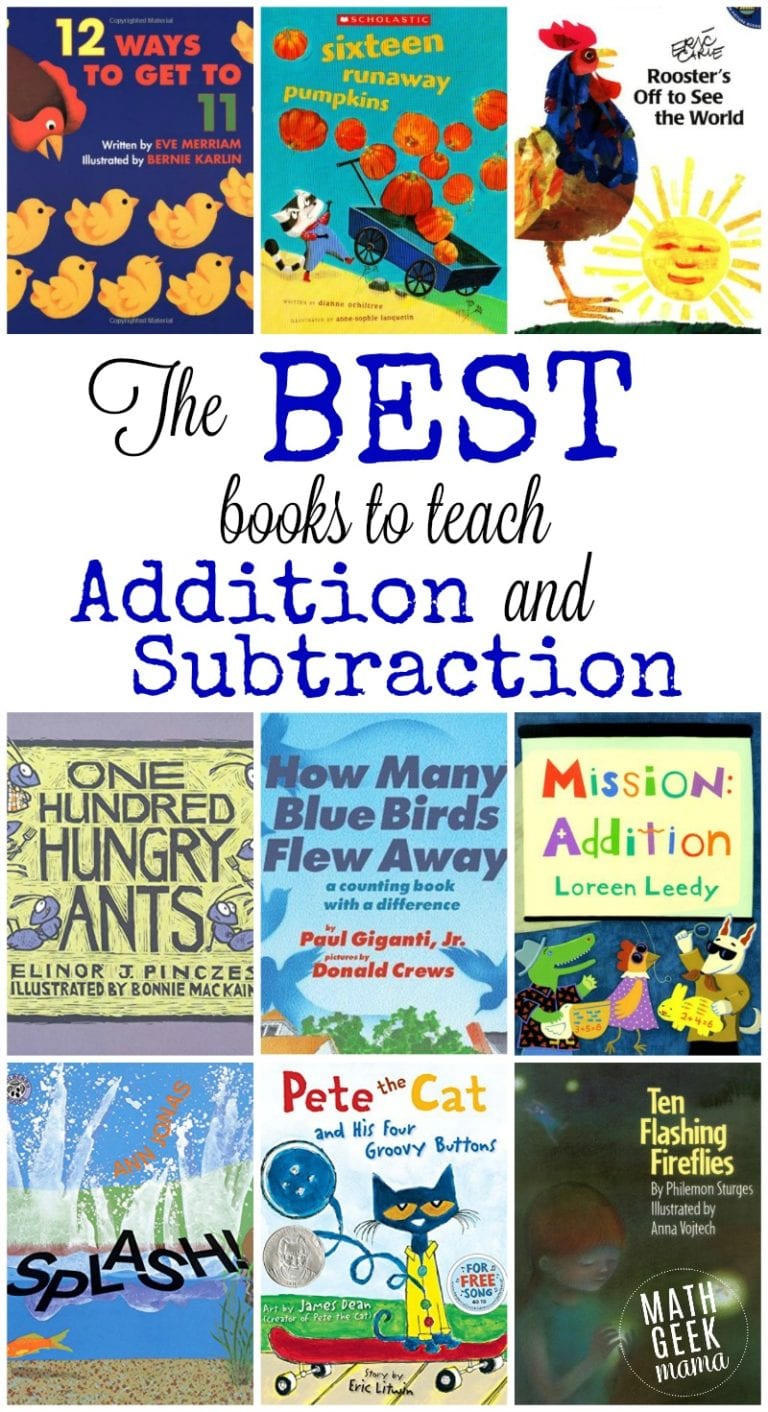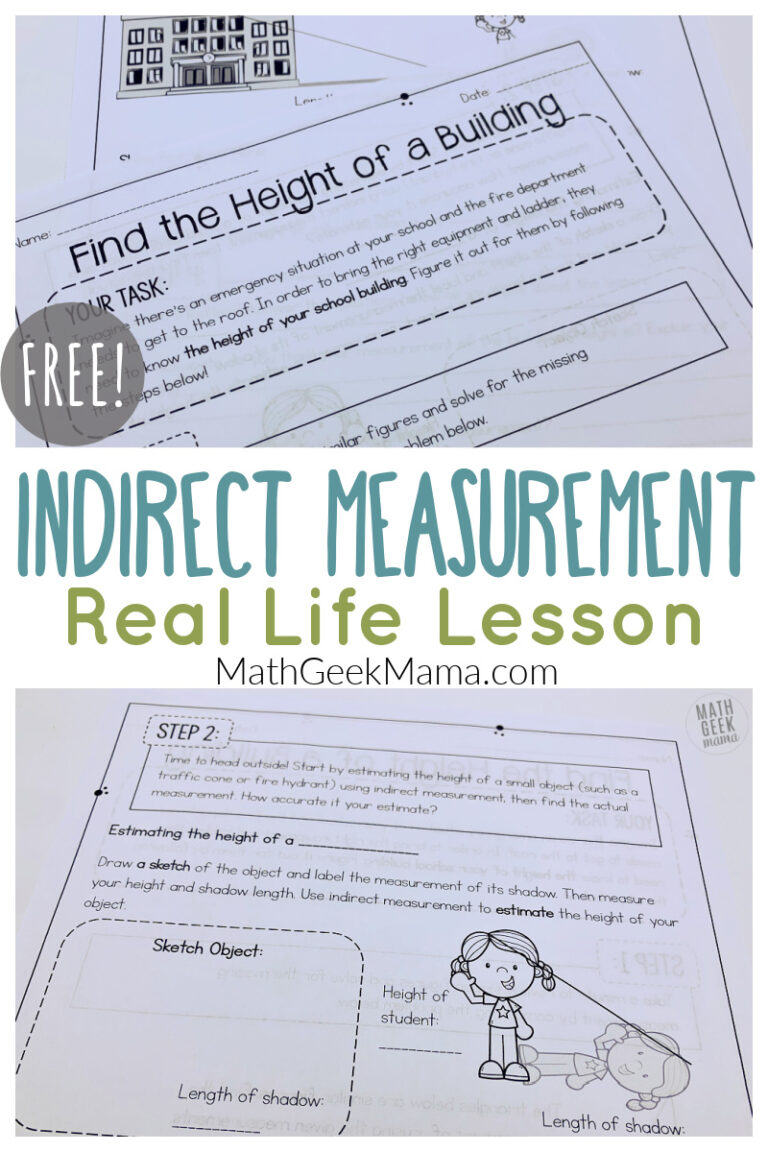Division Debate: Do Kids Need Long Division?
Teaching long division. Can you imagine anything more painful in homeschooling? The child staring at the problem with tears in their eyes thinking, “I will never understand this.” And there’s the mom who has explained for what feels like the 100th time thinking, “Why can’t they get this?!” What if I told you that you don’t have to teach long division? In fact, I don’t teach it to my children and I never worried about it in the classroom. If you’re wondering is long division necessary, here’s what I do instead.
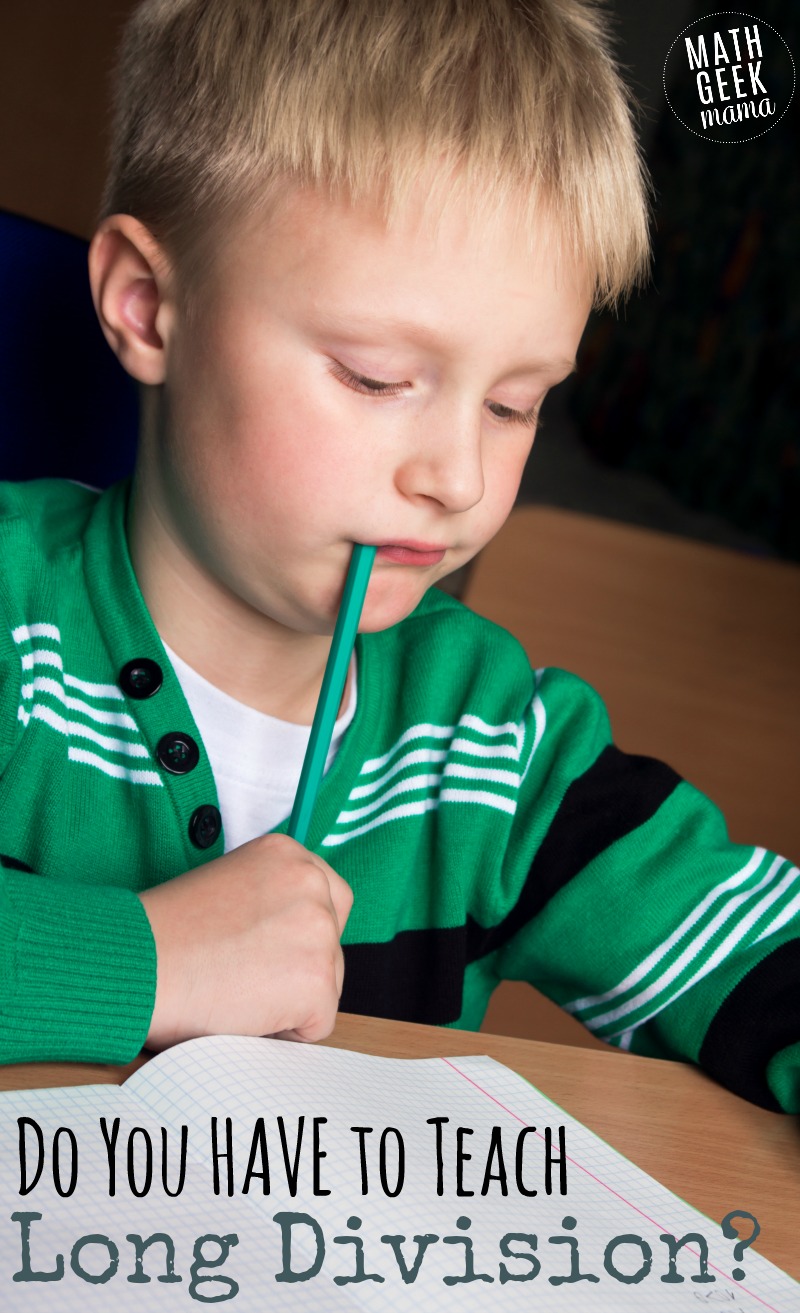
This is a guest post from Danielle at Blessedly Busy.
Making Division Meaningful
The more opportunities a student has to manipulate things, the more they will understand how division works. They’ll be able to see division.
You don’t even have to start with numbers.
Example 1: Using LEGO Bricks
Ask, “How many square LEGO fit in this crater plate?”
They don’t even know they just divided the crater plate into four (because there are four pegs to each square). Do the same thing with rectangles or any piece you have enough of.
Next, point out the numbers.
Ask, “How many pegs (I’m calling them pegs because I don’t know what else to call them…bumps?) are on this crater plate?” and “How many on a square (or whatever shape you used)?” and finally, “How many squares fit inside?”
Let’s say a crater plate has 100 pegs. The number sentence for that problem would be 100/4=25.
Don’t forget the magic statement, “You just solved a math problem!”
Make number sentences for all the LEGO shapes you have.
Then analyze them.
Is there a pattern? Yes, of course there is because math is the study of patterns. The one that stands out to me is, the bigger the number you divide by, the smaller the answer.
But I am sure there are more.
Example 2: Using Food
The next time you make cupcakes or muffins, purposely make an amount that can’t be divided evenly.
This is your chance to be super dramatic. “Oh no! There are 5 of us and 6 cupcakes. I don’t want to leave one cupcake lying around. What are we going to do?”
Make mini-muffins for even more division fun.
Don’t forget, “You just solved a math problem!”
Point out the math behind the problem.
In the case of our cupcakes, everyone got 1 and the last cupcake gets divided into 5ths. so, 6/5= 1 and 1/5
Related post: Dividing whole numbers when the answer is a fraction.
I have also used crackers.
Hand an almost gone box of crackers to a child and ask them to hand them out to each person. Mom gets the extras 🙂
Now ask, “How many crackers were there?” This is technically a multiplication problem. In division it would look like this: ?/5=30
Without the crackers, this would look like a really hard problem to solve.
A note about remainders: remainders only sometimes matter. In the case of the Lego they don’t really matter. We just want to know how many shapes fit. The left over pegs don’t matter.
In the case of the cupcakes however, leftovers matter.
Make certain students understand simple division before moving onto remainders.
And always introduce new concepts with things.
Moving Division Beyond Manipulatives
Start casually to build confidence. Maybe at the dinner table. Maybe while driving to soccer practice.
Keep with the same theme as the LEGO problem:
“How many 3’s fit in 9?”
“How many 30’s fit in 90?”
“How many 300’s fit in 900?”
To make it harder, use numbers with remainders:
“How many 2’s fit in 9?”
“How many 20’s fit in 90?”
I like giving them problems that have patterns like the ones above.
And don’t forget, “You just solved a math problem! 9/3=3”
Always give the math behind the problem and ask for patterns.
And don’t be afraid to get out the manipulatives (LEGO bricks, pattern blocks, snack food, etc.) when kids get stuck.
Introducing Double Digit Division
The size of the numbers you are working with changes nothing about how you teach it.
If I am teaching my students 350/46 I’m going to start by asking, “How many 46’s do you think fit in 350?”.
If they are clueless as to how to begin I might suggest rounding 46 to a number that’s easy to count by.
Or we might pull out manipulatives (which with large numbers might mean representing 350 on grid paper that they can color in groups of 46 and count).
The next problem I give them might be 350/23.
This problem is intersecting with the last problem because of the special relationship between 23 and 46.
I might drop a hint, I might not. But I will definitely write both number sentences down and ask, “Do you notice a pattern?”
(Hint: 23 is half of 46. So what does that mean for the answer? Is this always the case?)
The next problem might be 350/92.
Will students catch that it’s double 46? Will they know what that means for the answer?
See how much more fun math is when there’s meaning!
Is Teaching Long Division Worth the Battle?
Think about your life. When have you ever used long division? If I need to divide some complicated numbers, I get my calculator, and so do you. So is long division necessary?
Ask yourself, “Why am I teaching long division?.”
If the answer is something like-because the curriculum/standards/mother-in-law say I should, then throw that idea away.
If you feel deeply that it’s important to you and your student, then by all means, continue. But you need to know something. The traditional long division algorithm that we were taught growing up, is a short cut. It’s like writing short hand for secretaries (is there any wonder it’s hard for so many to decipher?).
My opinion: dry those tears (yours or your child’s) and throw those long division math pages in the garbage.
Danielle is a homeschooling mamma of 5. She is committed to making life with young children easier and sharing her passion for math. If you would like to learn more about teaching math to multiple age groups visit Blessedly Busy or follow her on: Facebook, Instagram, Pinterest or Twitter.
Note from the editor: This is a heated debate in math education. For those of you who are classroom teachers, you may not have a choice. But the bottom line is this: whether or not you teach the standard algorithm, division needs to be taught for understanding. With meaning. By seeing how it relates to place value and multiplication. And if you’d like to include the traditional algorithm, do so after students have a clear understanding of what the numbers and remainders mean.
Here’s another article on the subject, pleading the case for the long division algorithm, if you’d like an additional viewpoint. But it seems to me, they also advocate for teaching for understanding.
